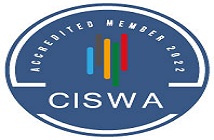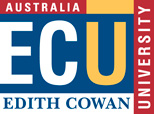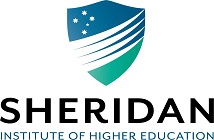ESOS Framework
Australia welcomes international students
The Australian Government wants international students to have a rewarding, enjoyable and safe experience when they come to Australia to study. Australia’s education and training system offer high-quality services and protection for international students to ensure they make the most of their time here.
Australia offers all levels of education to international students—from school (with some limitations depending on age and support from their family in Australia), through a foundation and English language intensive courses, to vocational education and training (VET) and higher education.
The laws that protect international students form the Education Services for Overseas Students (ESOS) framework.
The ESOS Act ensures that education providers are registered by the Australian Government. Under ESOS, education providers must meet certain obligations as part of their registration on the Commonwealth Register of Institutions and Courses for Overseas Students (CRICOS). They must act in accordance with principles designed to support the best possible services for our international students. As an international student on a student visa, you must study a course with an education provider that can be found on CRICOS at CRICOS WEBSITE
The ESOS framework also ensures that students have access to tuition assurance (which acts like consumer protection) and that they can get appropriate refunds.
As well as enhancing Australia’s quality education and training services, ESOS supports Australia’s migration laws as they relate to international students.
What you need to know about being an international student in Australia
The ESOS standards cover a range of information you have a right to know about and the services that must be offered to you by Australian education providers.
These include:
- orientation to help you understand the course and more about the place you are studying, as well as access to support services that can help you study and adjust to life in Australia
- the education provider’s contact officer or officers for overseas students
- what your provider’s requirements are for satisfactory attendance
- what your provider’s requirements are for satisfactory progress in the courses you study and what support is available if you are not progressing well
- if you can apply for course credit and the circumstances in which your enrolment can be deferred, suspended or cancelled
- a complaints and appeals process.
Your responsibilities as an international student in Australia
As an international student on a student visa, you are responsible for:
- complying with your student visa conditions
- ensuring you have and continue to maintain your Overseas Student Health Cover (OSHC) for as long as you stay in Australia as a student
- telling your provider if you change your address or other contact details
- meeting the terms of the written agreement with your education provider
- meeting the restriction on transfer between registered providers
- maintaining satisfactory course progress
- maintaining satisfactory attendance where applicable.
Information about visa conditions for student visa holders is available on the Department of Home Affair’s website at https://www.homeaffairs.gov.au/
Requirements for younger students (under 18)
If you are under 18 years of age, to ensure your safety you will only be granted a visa if there are adequate arrangements in place for your accommodation, support and general welfare for the length of your student visa or until you turn 18. This is a requirement of the Department of Home Affair. Under Australia’s immigration laws, student visa applicants under the age of 18 must be able to demonstrate that they will be accompanied by a parent or a legal custodian or an eligible relative, or that their education provider approves of other arrangements made for the student’s accommodation, support and general welfare while he or she is in Australia on a student visa.
Under the ESOS National Code, education providers must advise the Department of Immigration and Border Protection as soon as possible where a student under 18 years old changes their living arrangements or where the education provider no longer approves of the arrangements for the student’s accommodation, support and general welfare.
If your living arrangements have been approved by your education provider, but you wish to change them, you should seek approval for any change from your provider beforehand. If the provider agrees to you changing your living arrangements, the provider must then inform the Department of Home Affair of the change. If your provider has approved the change, the Department of Home Affair will not take any action. However, if your provider does not approve the change or the arrangements, then you will be in breach of your student visa condition and your visa may be cancelled.
More comprehensive information about specific visa requirements for students under 18 years of age is available on the Department of Home Affair’s website at https://www.homeaffairs.gov.au/
Using an education agent
Under the ESOS Act, all education providers must list their education agents on their website. All education providers must also have a written agreement with their agents, and they must ensure that the agents they use have a good knowledge of Australia’s international education system and that their agents behave honestly and with integrity.
Education agents are not the same as migration agents. A migration agent is responsible for giving you information on visa and immigration matters. You can also visit the Department of Home Affair’s website for more information at https://www.homeaffairs.gov.au/
International students do not have to use an education agent. You can lodge an enrolment application directly with the Australian education provider of your choice. You should consider contacting your education provider directly to see if they can help you with putting in your student enrolment application.
Finding the right education provider for you
You can find out more about Australia’s education system through Austrade and their website at www.austrade.gov.au/Education/Services.
CRICOS is a good place to start when you want to find out more about what courses and education providers are being offered in Australia. Visit the CRICOS website for more information at CRICOS WEBSITE.
Tuition protection
The ESOS framework includes elements of protection for students so that they can receive a refund if they do not complete a course. The Tuition Protection Service (TPS) helps international students whose education providers are unable to fully deliver their course of study. The TPS ensures that international students are able to either:
- complete their studies in another course or with another education provider or
- receive a refund of their unspent tuition fees (the amount that is equal to the amount of the course the student has NOT undertaken).
More information on the Tuition Protection Service is available at https://tps.gov.au/Home.
Making complaints and getting help
All education providers registered under CRICOS must have in place complaints and appeals processes to help students resolve their issues. These processes must be independent. They must also be easily and immediately available to students and be as inexpensive as possible. Making a complaint should not affect your enrolment.
If you cannot resolve your complaint with a provider, and your provider is a private organisation, you can approach the Overseas Students Ombudsman. Visit the website of the Commonwealth Ombudsman for more information about what they do and how they help students at https://www.ombudsman.gov.au/How-we-can-help/overseas-students
More about Australia
Australia offers a very modern, vibrant and multicultural lifestyle. It is a popular tourist destination for people from all over the world. You can learn more about Australia’s history and its indigenous heritage at https://www.australia.com/en.






